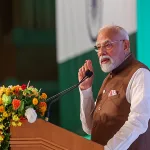DR. MOHAMMAD IRFAN SHAH | DR. KHADIM HUSSAIN DAR
Every year on 28th September World Rabies Day is celebrated globally to commemorate the death anniversary of French scientist, Louis Pasteur who developed the first rabies vaccine. The event is held annually to raise public awareness about rabies prevention and to highlight the progress in defeating this horrifying disease.This year’s theme “Rabies: All For 1, One Health For All” is based on the novel “The Three Musketeers” in which the heroes overcame injustice and strife as a team to achieve their goals. “All for 1″ expresses the responsibility every one of us has in the battle to eliminate rabies. All people can work towards One Health, and everyone can contribute to saving a life. “Number 1” signifies that even a single person can make a difference in achieving this goal, and one vaccinated animal and a single course of Post-exposure prophylaxis (PEP) can save a life .
“One Health for All” highlights the need to implement an intersectoral and multidisciplinary approach with the contribution, intervention and cooperation of professional teams from the human, animal and environmental health sectors. As more than 75% of emerging infectious diseases and 60% of known human infectious diseases are transmitted from animals, the role of one health cannot be neglected. The COVID-19 pandemic has made One Health a policy priority in relation to future pandemic preparedness and the design of disease prevention and control strategies.
Rabies is a viral disease caused by the Lyssavirus and affects all warm-blooded animals. Among the zoonotic diseases – diseases that are transmitted naturally from animals to humans, rabies is of utmost public health significance due to its lethality. Fatality rate of this deadly disease is nearly 100 %(survival rate of < 0.1%). Disease is transmitted to humans and animals via saliva, usually through bites, scratches or direct contact with mucosa (e.g. eyes, mouth or open wounds). Domestic dogs are the predominant source of rabies virus in developing countries, while wild animals are the primary carriers of rabies in developed countries. Almost all cases of rabies (99%) are caused by dog bites. In India, dogs are responsible for about 97 per cent of human rabies, followed by cats (2 per cent), jackals, mongoose and others (1 per cent). Bat-mediated rabies has not been reported so far in the country.
Rabies affects the central nervous system and once inside the nervous system, the virus produces acute inflammation of the brain. If clinical symptoms appear, rabies is virtually 100% fatal. The incubation period for rabies is typically 2–3 months but may vary from 1 week to 1 year, depending on factors such as the location of virus entry and the viral load. Initial symptoms of rabies include generic signs like fever, pain and unusual or unexplained tingling, pricking, or burning sensations at the wound site. As the virus moves to the central nervous system, progressive and fatal inflammation of the brain and spinal cord develops. Clinical rabies in people can be managed but very rarely cured. There are two forms of rabies: Furious rabies and Paralytic rabies.
Rabies is one of the oldest described infectious diseases, known for over 4,000 years. Rabies is an endemic disease in nearly all land masses except in islands like Australia, and Antarctica where no cases of dog-mediated rabies have been reported. Although it has been eliminated in Western Europe, North America, Japan, South Korea and parts of Latin America; the viral disease is still present in large parts of Africa and Asia. While rabies is a 100% preventable disease, nearly 60,000 people die from the disease each year i.e. 1 person dies every 9 minutes. Among the fatalities, 40% are children under the age of 15. India is estimated to suffer the greatest rabies burden of any country, both in terms of annual human deaths and disability-adjusted life years (DALYs). India accounts for 36% and 65% of the global deaths and Southeast Asian region deaths, respectively. At least 6644 cases of clinical suspicion and deaths due to rabies can be traced between 2012 and 2022 in India. The country is estimated to have between 30 and 60 million stray dogs, which are the main vectors of transmission of the disease, killing 21,000 people per year.
In 2018, the Food and Agriculture Organization of the United Nations (FAO), the World Organization for Animal Health (OIE), the World Health Organisation (WHO) and the Global Alliance for Rabies Control (GARC) developed Zero by 30: The Global Strategic Plan to end human deaths from dog-mediated rabies by 2030 (Zero by 30). Central to this comprehensive strategy is a One Health approach which recognizes the intimate links between human, animal and environmental health, and promotes intersectoral collaboration to tackle public health challenges Current approaches to eliminate rabies have not been able to reduce the burden of rabies as they have failed to include all stakeholders (human, animal, and environmental health sectors). When applied to rabies control, the One Health approach is particularly effectivebecause rabies is a zoonotic disease. With the help of one health strategy, Goa has been the first state in India to achieve human dog-mediated rabies elimination. An examination of the state’s rabies management programme revealed that the key factors behind this accomplishment were a combination of canine vaccination, human education, and active viral surveillance.
Recent data and medical records paint a concerning picture of the escalating rabies cases in Kashmir over the past few years. Valley recorded 6,800 animal bite cases from April 1 2022 to March 31, 2023, out of which over 5,700 (80%) are stray dog bite cases. The disease can be controlled by applying a three-pronged offensive against the virus’s spread: mass dog vaccination, rabies education, and intensive rabies surveillance in both humans and dogs. Recently, the Ministry of Health & Family Welfare and Ministry of Fisheries, Animal Husbandry & Dairying, and Government of India jointly launched the National Action Plan For Dog Mediated Rabies Elimination (NAPRE) from India by 2030. The Central Government has framed the Animal Birth Control (Dogs) Rules, 2023 which is to be implemented by the local authority to control the population of stray dogs. The main focus of the rules is on anti-rabies vaccination of stray dogs and neutering of stray dogs as a means of population stabilization.
To eliminate this dreaded disease, all key elements of rabies prevention must be brought together, and all stakeholders must actively participate in the joint implementation of a one health approach at the ground level.This interdisciplinary approach is crucial for achieving sustainable and effective rabies control and prevention.
(Dr.Mohammad Irfan Shah is a Veterinarian and can be mailed at: [email protected]. And Dr. Khadim Hussain Dar is also a Veterinarian and can be approached at: [email protected])





